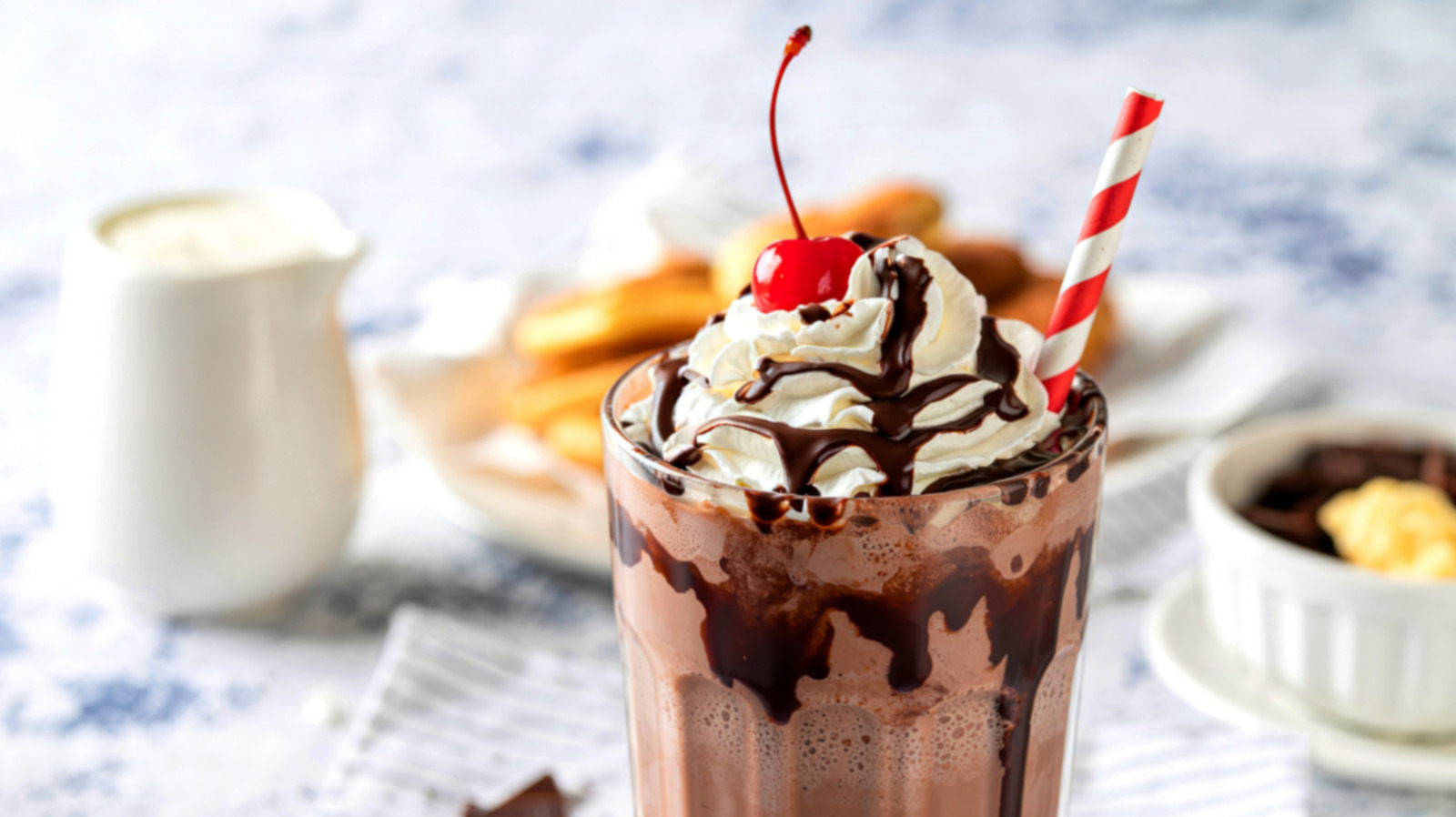
""Chocolate chips (like in mint chip) melt at body temperature," Young says. "When blended into a really cold liquid, the result is basically like frozen sand." Essentially, while your brain is expecting uniform perfection, your teeth are bombarded by a boatload of tiny ice shards. It's not just chocolate chips that are to blame, either. Cookie dough, sprinkles, sweetened coconut shavings, and other pre-incorporated ice cream inclusions can break down into frozen fragments that could clog your straw and annoy your taste buds."
"As for how to incorporate mix-ins into your homemade milkshakes to avoid that sandy texture, Young says, "Stir them in after blending." This allows the milkshake's ice cream base to get all smooth in the blender, while any additional add-ins remain intact. With the chunks a little bit bigger, you get texture variation without taking an unexpected vacation to the beach."
"No matter how hard you try and fight it, a homemade milkshake will almost always put a smile on your face. Packed full of luxurious ice cream, a proper shake that's thick, creamy, and sinfully decadent is the stuff of legend. And while making them is as easy as scooping, blending, and pouring, the wrong choice of ice cream can lead to an unpleasant, gritty mouth feel."
Gritty milkshakes commonly result when ice cream mix-ins break down into frozen fragments during blending. Small inclusions such as chocolate chips, cookie dough, sprinkles, and sweetened coconut shavings can become hard, sandy bits when exposed to very cold liquids and high shear in blenders. Chocolate chips in particular melt at body temperature but shatter into tiny ice shards when pulverized cold. These fragments can clog straws and create an unpleasant mouthfeel. To preserve a smooth base while retaining texture, blend the plain ice cream and liquids first, then stir larger mix-ins into the finished shake so chunks remain intact.
Read at Tasting Table
Unable to calculate read time
Collection
[
|
...
]